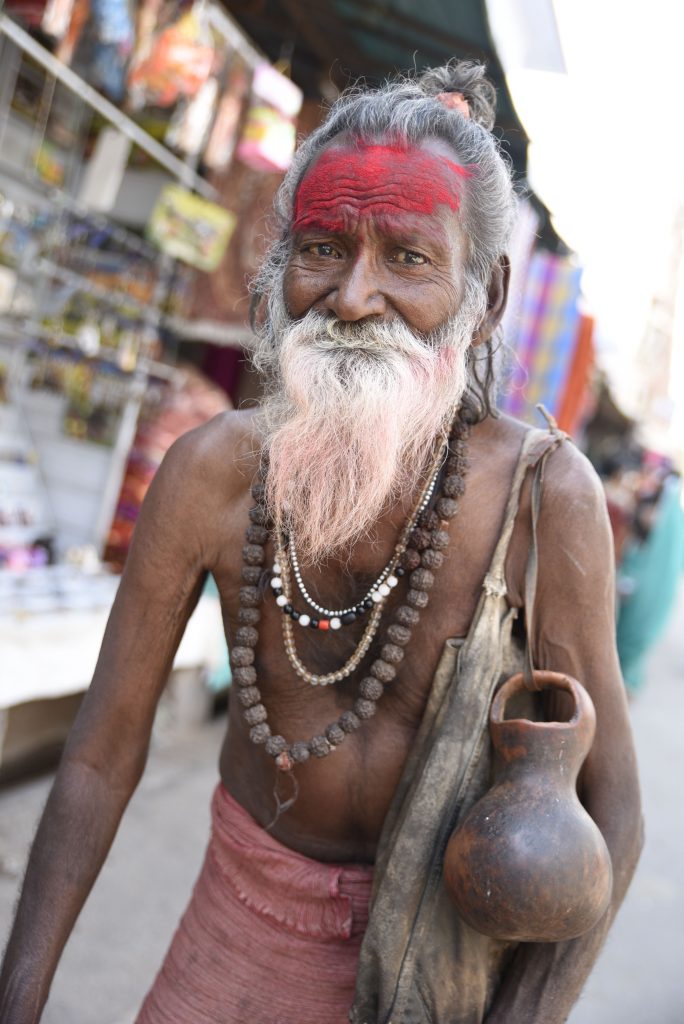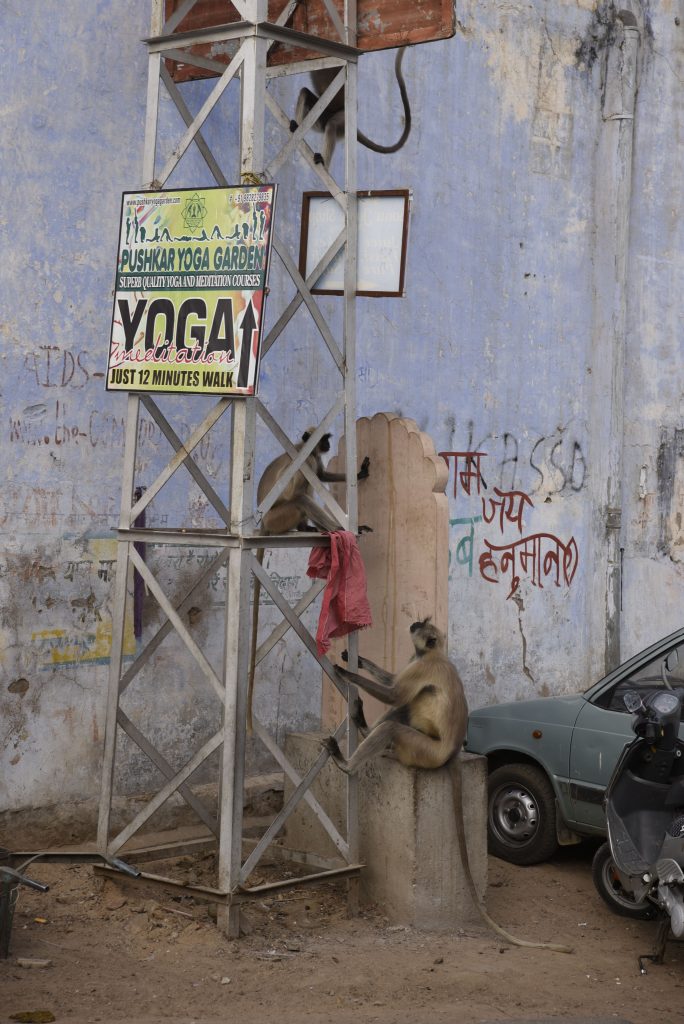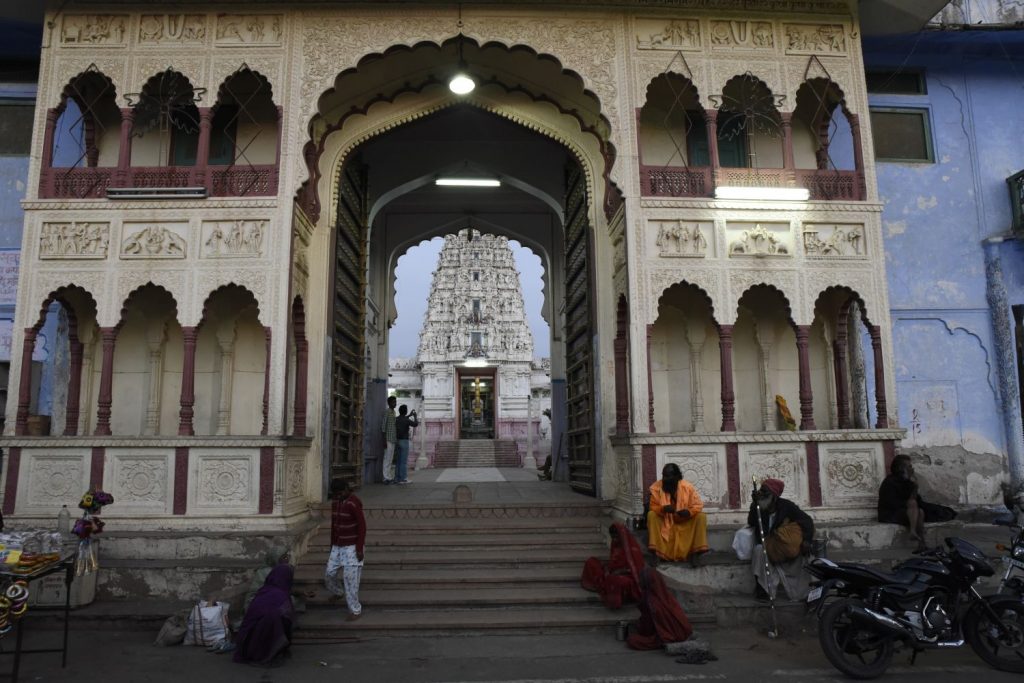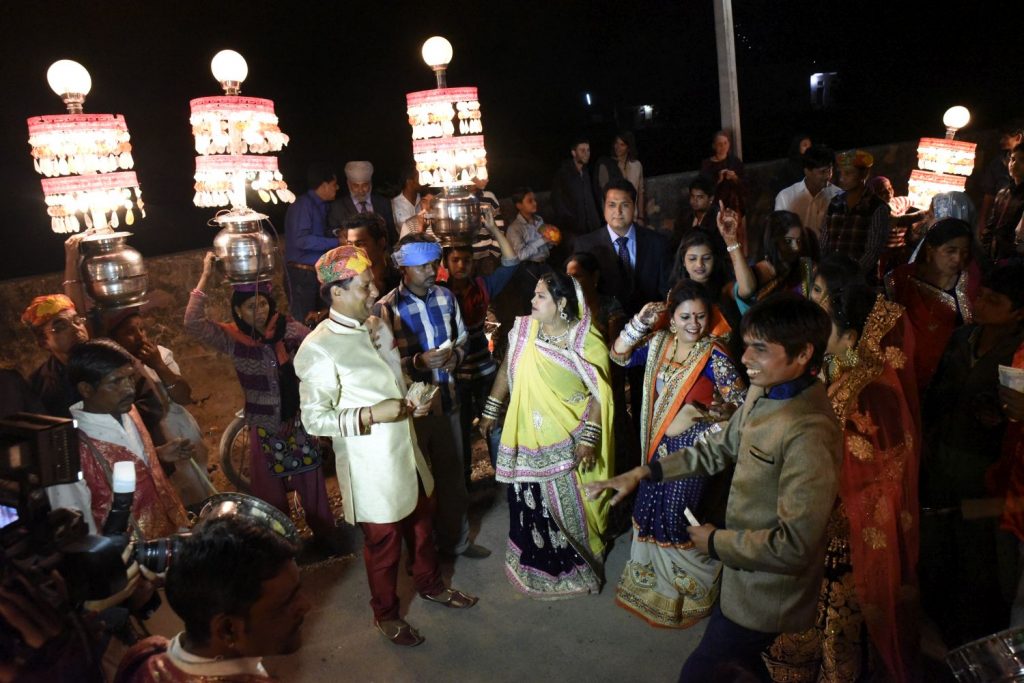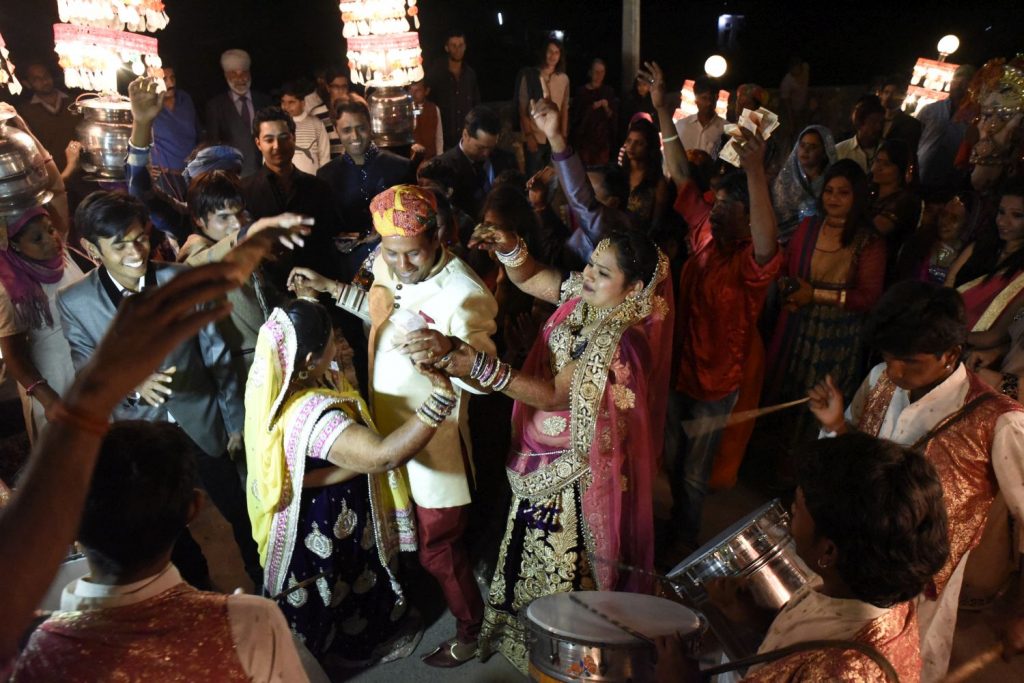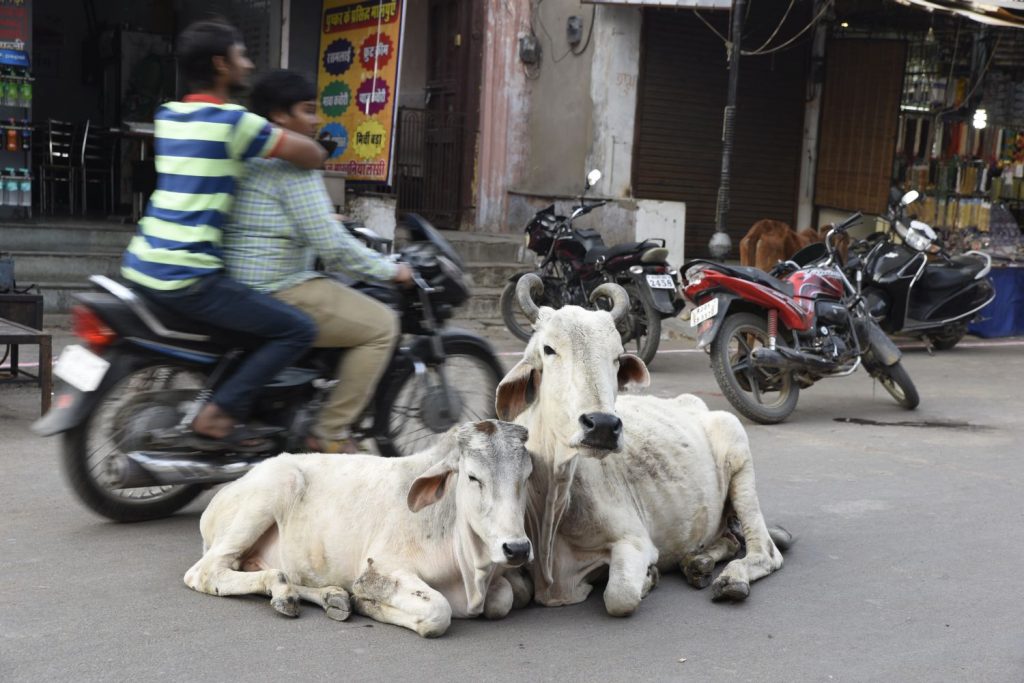
Pushkar is best known for its annual Pushkar Camel Fair, but I am not visiting at the right time of year for that as it’s in October or November depending on the lunar calendar.
All I saw was a couple of rather sick looking camels available for rent to tourists wishing to take a “safari.”
Otherwise, Pushkar is another Hindu religious town where people come to bathe in Pushkar Lake or to pray at one of the few temples in India to the god Brahma.
Pushkar has also long been a stop on the hippie trail, though now it caters to a mix of younger travellers, aging hippies and regular tourists, offering pizza, falafel, yoga and astrology.
Among the mix of international travellers, a substantial portion in Pushkar, as in some other locations in India, are Israelis – I guess because India is one of the few countries in this part of the world that Israelis can travel to. Many of the shops and restaurants catering to foreign travellers even display signage in Hebrew.
Pushkar’s population is only around 15,000 people so the tourists tend to stand out a lot more than in larger places, such as Varanasi, that get a lot of tourists, but where they are diluted in a larger population.
As a result, many of the people who prey on tourists in Pushkar are particularly aggressive. I was constantly asked for money and often very persistently, even when I firmly said “no.” It seemed to me a more apt name for the town might be “Pushy Kar.”
At the lake, where photography is strictly prohibited (as is smooching, saying profanities and eating non-vegetarian foods), priests both real and fake, use all kinds of techniques to get you to part with your rupees. Several times I had a flower thrust into my hand with the suggestion that I should put it into the lake. Knowing this would lead to a request for rupees, I politely gave it back and declined to take it, though this encountered much resistance.
Finally I decided to let one of the real priests do puja with me on the understanding that this gets you a “Pushkar passport,” a small band of coloured string around the wrist, which supposedly signals to other priests that you’ve already been fleeced and to leave you alone. At least that’s the theory.
One guide book I have warns of the trick that priests use where they ask how much you are prepared to donate. They then say prayers for each of your family members and in the end ask you for the amount you committed to multiplied by the number of family members they prayed for.
In my case, the priest tried a different twist. After I told him I would give 100 rupees (about $2, which according to my book is a reasonable donation for a foreigner), he multiplied it by three and demanded 300 rupees – one for each of the gods, Brahma, Vishnu and Shiva. I stood my ground and gave only what I committed to.
Away from the lake, others were constantly at me with hands out. Two women asked me for money first offering to pose for a photo, but I declined. They persisted. Then one took my hand and before I knew it, she was drawing on it with a tube of wet henna paste. I verbally told her to stop, but in hindsight I realize I should have more forcefully pulled my hand away. I was nervous though that the henna would smear and stain my clothing and I had nothing to wipe it off with. The woman insisted it would dry and she would remove it.
When she did scrape it off, there was a pattern stained over my hand. I hadn’t realized, until I looked it up online, but it doesn’t just wash off. You have to wait several weeks for your skin to defoliate before it comes off. So I have a stupid ugly pattern stained in henna across the palm of my right hand for the next few weeks. For this “service,” which I had resisted, though not firmly enough, the woman demanded rupees.
Against my better judgment, I gave her a few rupees to be rid of her.
I did have some friendly encounters with other local people and some of the merchants would greet me without being overly pushy.
And there were enjoyable moments like seeing a Rajasthani wedding party pass along the street by my hotel with dancing and people in elaborate local clothing.
But a few cases of very aggressive demands for rupees did ruin Pushkar for me.
I expect some other parts of Rajasthan – notably Jodhpur and Jaipur – to also feature aggressive demands for my rupees, but hopefully they’ll also have more redeeming qualities.
Being sick with a cold and some tummy ailments probably didn’t help, but on the whole, Pushkar was a big disappointment.
Jodhpur is next. I’ve been looking forward to this blue city.
